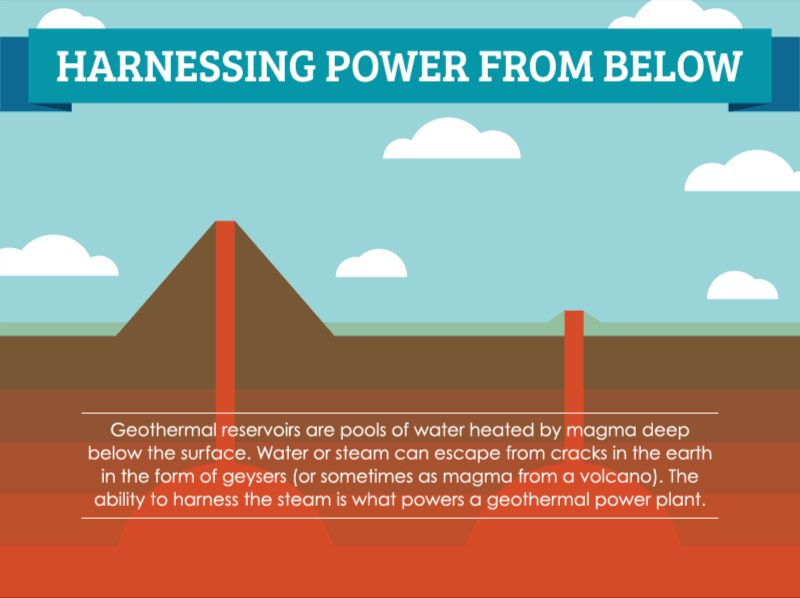Sources of Energy Blog 3
SOURCES OF ENERGY
Lesson 3
Good Morning All !
Learning outcomes :
develop the concept of non conventional energy sources
list the significance of the above resources.
develop the concept of non conventional energy sources
- energy from the sea ,
- geo thermal energy ,
- nuclear energy
list the significance of the above resources.
Energy From the Sea
The seas and oceans and other water bodies are a source of kinetic and potential energy due to the immense volume of water and the motion of waves.
Tidal energy
- Tides are variations in the level of water due to the gravitational pull of the moon.
- The phenomenon of rise and fall of water level or high and low tide gives tidal energy.
- Tidal energy is obtained by constructing dams near the narrow openings of the sea. When the tide sets in, it moves the turbine which directly produces electricity.
- It is limited to places near the sea.
Wave energy
- Waves possess a lot of kinetic energy that can be harnessed to produce electricity.
- Waves are produced by strong winds blowing over the sea.
- Limited to places with strong winds. Devices have been designed to capture this energy.

Ocean thermal energy
- The difference in surface temperatures of water and water at a certain depth in oceans is exploited to harness this form of energy.
- Temperature difference must be 20∘ between the surface and water up to depths of 2 km.
- Warm water is used to boil volatile ammonia to form vapours that move the turbine. Cold water is used to condense the vapour back to liquid.

Geothermal energy

- There is a huge amount of heat trapped inside the earth. Molten rocks from Earth’s core sometimes come up due to geological changes and get trapped in hotspots. Harnessing this heat energy is called geothermal energy.
- Any underground water present gets heated due to the hotspots and gets converted to steam which escapes from the surface of the earth as hot springs.
- This steam is used to rotate turbines and generate electricity.
ADVANTAGES OF GEOTHERMAL ENERGY
• Renewable
• Inexpensive
DISADVANTAGES OF GEOTHERMAL ENERGY
• Only available in few sites

Nuclear Energy
- Nuclear energy can be used to generate electricity by means of nuclear fission.
- In a nuclear reactor, the nuclear fuel is used to carry out sustained fission chain reaction to produce electricity at a controlled rate.
Nuclear fission
Nuclear fission is the process where a heavy atom (uranium or plutonium) is bombarded with neutrons that split the atom to give lighter nuclei.
This process releases tremendous amounts of energy.
Fission of 1 atom of uranium gives 10 million times the energy of combustion of 1 atom of carbon from coal.
This process releases tremendous amounts of energy.
Fission of 1 atom of uranium gives 10 million times the energy of combustion of 1 atom of carbon from coal.
ADVANTAGES OF NUCLEAR ENERGY
• Alternative source due to depletion of fossil fuels
DISADVANTAGES OF NUCLEAR ENERGY
- Nuclear waste is hazardous as heavy atoms decay into harmful subatomic particles.
- High setup and maintenance cost
- Limited availability of uranium
- Can be used for destructive purposes
Nuclear fusion
- Fusion means combining lighter nuclei to produce a heavier nucleus, usually hydrogen or hydrogen isotopes to create helium.
HOME ASSIGNMENT
PAGE 253 Q1,2
PAGE 255 Q3,5,6
Q9 AND Q10 TOMORROW along with a link to a google form for assessment of this chapter
PAGE 255 Q3,5,6
Q9 AND Q10 TOMORROW along with a link to a google form for assessment of this chapter


Good morning sir
ReplyDeleteHarsh vardhan
Good morning ma'am
ReplyDeleteEmmanuel GOMES
Good morning sir
ReplyDeleteJoel Reji
This comment has been removed by the author.
ReplyDeleteGood morning sir
ReplyDeleteJatin James
Good morning Sir
ReplyDeleteAdavya Dhir
Good morning sir
ReplyDeleteShaurya Shil
10D
ReplyDeleteGood morning sir
ReplyDeleteGood morning sir
ReplyDeleteGood Morning Sir
ReplyDelete-Ojas Girotra
Good morning sir
ReplyDeleteDivij Gogia
Good morning sir
ReplyDeleteAryan Anand
Good morning sir
ReplyDeleteTuan Muan Lal
Good morning sir
ReplyDeleteSidh chichra
Good morning sir
ReplyDeleteSiddharth kushwaha
This comment has been removed by the author.
ReplyDeleteGood morning sir
ReplyDeleteBennett Joy
Good morning sir
ReplyDeleteKennard Rence William
good morning sir
ReplyDeleteGood morning ma'am
ReplyDeleteEugene Samuel
This comment has been removed by the author.
ReplyDeleteGood Morning Sir
ReplyDelete-Pratham Chhabra
Good morning sir
ReplyDeleteSahej Grover
10-D
GOOD MORNING SIR
ReplyDeleteANSHUMAAN
Good morning sir
ReplyDeleteArya Veer Taneja
good morning sir
ReplyDeletePRESENT
ReplyDeleteGood morning sir
ReplyDeleteAkshat Verma
Good morning sir
ReplyDeleteGood morning ma'am Arvind Goyal
ReplyDeleteGood morning sir
ReplyDeleteRiyansh gautam
XD
Good morning
ReplyDeleteAyaan Edward
Good morning sir
ReplyDeleteSarim Hasan
Good morning sir Ng.Samuel
ReplyDeletepresent
ReplyDeleteGood afternoon sir
ReplyDeleteGood afternoon sir
ReplyDeleteGood Evening Sir
ReplyDeleteTalha Ansari
Good afternoon sir
ReplyDeleteKshitij Jain
Good afternoon sir
ReplyDeleteJapmann singh